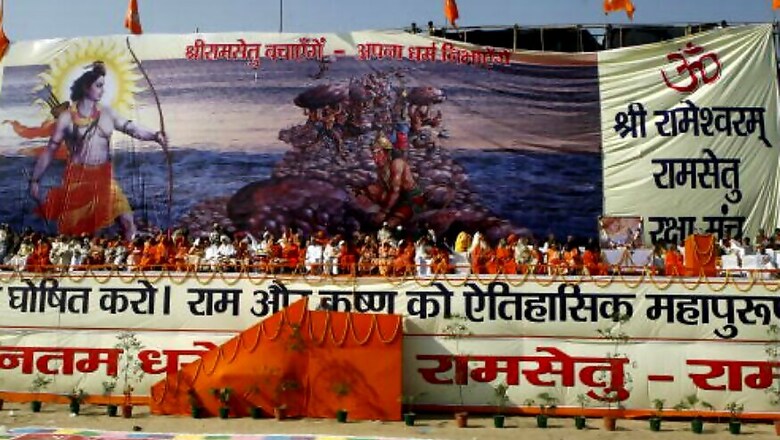
views
New Delhi: At the Indian Council of Historical Research (ICHR), they are going cutting-edge to validate a mythical bridge whose claim dates back to several millennia.
The Indian epic of Ramayana describes the Adam’s bridge – often linked to the chain of limestone shoals at the Palk Straits linking the Tamil Nadu coast to Sri Lanka – as an artificial bridge created to facilitate Lord Ram’s journey to Lanka to rescue Sita.
Professor Y Sudershan Rao, Chairperson of ICHR, told News18 that there are clear indications on the west coast that suggests submersion of coastal area where civilization was flourishing.
“We have sufficient literary evidence that ancient Dwaraka was swept away by sea tide,” he said, referring to Lord Krishna’s capital, believed to be submerged on the Gujarat coast.
Similarly, we have indications in our earliest epic that a Setu was built by Sri Ram, he said, adding, “much discussion is going on this subject but no effort has been made by any agency- private or public- to explore our coast".
The Setu called Adam's Bridge is a chain of limestone shoals found between Pamban Island or the Rameswaram Island, off the south-eastern coast of Tamil Nadu, India, and Mannar Island, off the north-western coast of Sri Lanka.
Many organisations have challenged geological theories on the formation of Ram Setu. While scientists say it is a naturally formed chain of lime shoals, there are those who believe that it was built by Lord Rama's 'Vanar Sena' (army of apes) and hence cannot be touched.
“So ICHR would like to address this vital issue relating to our ancient past which may help us to judge the historicity and chronology of our great civilizations as reflected in our epics and other literature,” Dr Rao said.
He pointed out that the under-water archaeology is an emerging specialty in archaeological science and in India it is still in a budding stage.
“ICHR plans to provide theoretical and practical training to select young archaeologists and inspire them to take up explorative initiatives along our coast obtaining necessary clearances from all the concerned,” he said.
Controversies around Ram Setu
· The Sethusamudram project that intends to dredge up the shallow sea in Palk Straits so as to enhance a shipping route along the Indian peninsula had run into trouble with Hindutva organisations protesting. They claimed the dredging would destroy the remnants of Ram Setu.
· The Government of India, in an affidavit in the Supreme Court, said that there is no historical proof of the bridge.
· In 2007, a publication of the National Remote Sensing Agency said that the structure "may be man-made". Archaeological Survey of India found no evidence for it being human-made.
· In a 2008 court case, a spokesman for the government stated "So where is the Setu? We are not destroying any bridge. There is no bridge. It was not a man-made structure. It may be a superman-made structure, but the same superman had destroyed it. That is why for centuries nobody mentioned anything about it. It has become an object of worship only recently.”



















Comments
0 comment